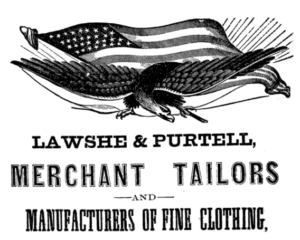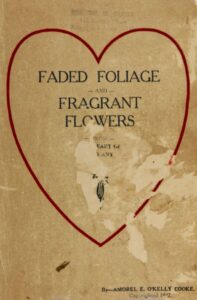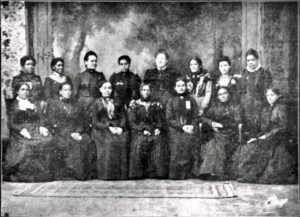
HathiTrust Digital Library deposited its 16th million volume, Osborne’s London and Birmingham Railway guide. Illustrated, on December 7, 2017. This marked a nine-year effort on behalf of research institutions and libraries including Emory who joined the partnership in 2010. Well done HathiTrust, Emory, and fellow HathiTrust partners!
Most Popular HathiTrust Books from Emory for 2017
Usage statistics show that the top 15 most popular volumes contributed by Emory over the past year reflect our collection strengths in African American history and the history of Atlanta. Take a look below!
#1 Search Light on the Seventh Wonder: X-Ray and Search Light on the Bible with Natural Science: Discoveries of the Twentieth Century, Boston Napoleon Bonapart Boyd, 1905
Boston Napoleon Bonapart Boyd (1860-1932) was born a slave in in Greenville, North Carolina. A dedicated follower of the Bible, he authored three religious texts, including the above Search Light on the Seventh Wonder. In Search Light, Boyd, explores the relationship between science and Christian teachings.
#2 Who’s Who among the Colored Baptists of the United States: Volume I, Samuel William Bacote, 1913

From #11 the Williams Directory
This biographical text highlights 137 notable African American Baptist leaders including statesman Reverend Elias Camp Morris and teacher, writer, and intellectual Booker T. Washington. The book notes that in 1913 there were over eighteen-thousand churches and two million African American Baptists in the United States.
#3 History and Views of Colored Officers Training Camp: For 1917 at Fort Des Moines, Iowa, John L. Thompson. 1917
History and Views of Colored Officers chronicles 1,000 cadets of the Officers Training Camp for African Americans, which opened in Des Moines Iowa on June 17, 1917.
This book, digitized for HathiTrust, was part of the personal library of Carter G. Woodson, one of the most important 20th-century creators of black print culture. Woodson’s library is housed at the Stuart A. Rose Manuscript, Archives, and Rare Book Library.
#4 Twelve Years a Slave: The Thrilling Story of a Free Colored Man, Kidnapped in Washington in 1841, Sold into Slavery, and after a Twelve Years’ Bondage Reclaimed by State Authority from a Cotton Plantation in Louisiana, Solomon Northup, n.d.
Twelve Years a Slave is the memoir and slave narrative of Soloman Northup, a free black man kidnapped and sold into slavery in the Deep South. First published in 1853, this book provides a first-person account of twelve years on a Louisiana plantation, Bayou Boeuf. Northup’s memoir has been adapted for the big and small screen. In 1984, famed activist and photographer Gordon Parks directed a television version. In 2013, the book was made into a feature film.
#5 The Atlanta Exposition and South Illustrated, 1895
This souvenir book was created for the Cotton States Exposition held at Piedmont Park in Atlanta, Georgia. Atlanta photography studio of F. L. Howe took the images reprinted therein.

From #13 Faded Foliage
The Pennsylvania Negro Business Directory is a list of African American businesses in the state. According to the introduction, the editors estimated that African Americans controlled some $15,000,000 worth of property in 1910.
#7 The Negro at Mound Bayou: Being an Authentic Story of the Founding, Growth and Development of the “Most Celebrated Town in the South,” Covering a Period of Twenty-Two Years, Aurelius P. Hood, 1909
This book recorded the accomplishments of the African American people in Mound Bayou, Mississippi, an independent African American community founded by former slave Isaiah Montgomery.
#8 History of Walker Baptist Association of Georgia, R. J. Johnson, 1909
History of Walker Baptist Association chronicles the Walker Baptist Association of Augusta, Georgia, an African American religious and educational organization founded in 1868.
#9 Life and Times of Frederick Douglass: His Early Life as a Slave, His Escape from Bondage, and His Complete History to the Present Time, Frederick Douglass, 1882
This autobiography of Frederick Douglass, the social reformer, abolitionist, orator, writer and statesman, discusses Douglass’s remarkable life during and after the Civil War. “It will be seen in these pages that I have lived several lives in one,” Douglass writes. “First the life of slavery; secondly, the life of a fugitive from slavery; thirdly, the life of comparative freedom; fourthly, the life of conflict and battle; and fifthly, the life of victory, if not complete, at least assured.”
#10 Piney Woods and Its Story, Laurence Clifton Jones, 1922
Piney Woods chronicles the life of Laurence Jones, founder and long-time president of Piney Woods Country Life School in Rankin, Mississippi.
#11 Williams’ Atlanta Directory, City Guide, and Business Mirror, Volume 1, 1859-1860, 1859
This is the first issue of the Williams’ Atlanta Directory, City Guide, and Business Mirror, published just twelve years after the city was incorporated.
#12 History of the African Methodist Episcopal Church in Alabama: With Biographical Sketches, Winfield Henri Mixon, 1902
This church history was written by Reverend W. H. Mixon, an author and a member of the North Alabama Conference of the African Methodist Episcopal Church.
#13 Faded Foliage and Fragrant Flowers from the Heart of Bethany, Amorel E.O’Kelly-Cooke, 1922
This souvenir program and history of Bethany Baptist Church of Newark, New Jersey was prepared in 1909 for their Grand Jubilee.
#14 Ten Little Niggers, n.d.
This sheet music also includes an illustrated rendering of the minstrel song. For alternative illustrations of the minstrel and an examination of racist imagery throughout history see Life Upon These Shores: Looking at African American History, 1513-2008 by Henry Louis Gates.
Unlike the Atlanta Exposition and South Illustrated (#5 above), this was the “official” souvenir publication of the Cotton States Exposition, which drew nearly 80,000 visitors over 100 days.
Thanks to the California Digital Library for inspiring this post.

